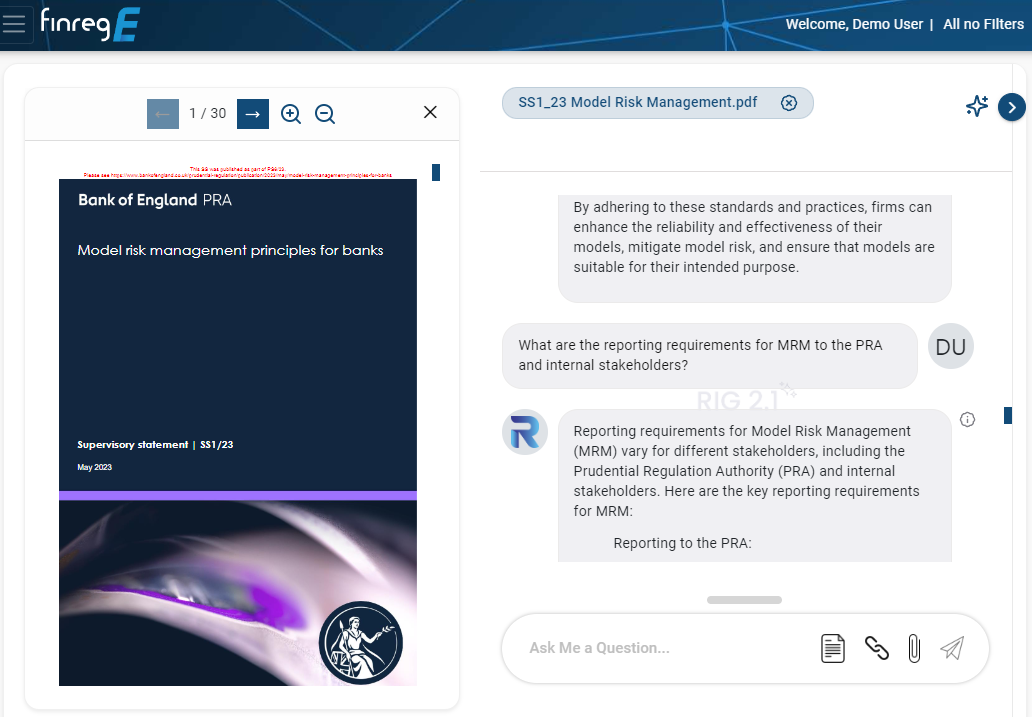Your Guide to Regulatory Change Management
Regulatory change management process is a critical component of regulatory compliance. It involves identifying, assessing and implementing regulatory changes to meet regulatory requirements.Organisations must have an organized regulatory change management process to manage regulatory change effectively.
This should include determining the scope of regulatory change, analysing new regulations for impact on existing operations, creating plans for implementing changes, tracking progress of regulatory changes, and communicating updates to stakeholders.
Regulatory Change Management Process Elements
A successful organisational response to regulatory changes calls for an efficient and effective procedure. This should include well-defined checkpoints such as acquiring information, pinpointing pertinent data, routing it to qualified personnel for assessment, tracing accountability steps along the way and deducing its effect on the company’s bottom line.
Organisations can use regulatory change management software to support their regulatory change management process. These solutions help streamline the process by automating the collection and analysis of regulatory data, simplifying recordkeeping processes, providing real-time notifications when new regulations are released, and tracking progress of changes.
Ultimately, these efforts work towards establishing an agile change management system that identifies risks in real time while promoting collaboration among stakeholders from start to finish. A well-defined regulatory change management process includes:
-
- Regulatory taxonomy and repository: Properly categorising and organising regulations and related documents help ensure that regulatory changes can be tracked, monitored and implemented efficiently.
- Regulatory roles and responsibilities:Defining roles and responsibilities for regulatory change management helps ensure that changes are addressed promptly by the appropriate stakeholders.
- Regulatory content feeds: Using content feeds from regulatory agencies and industry groups can help identify relevant changes quickly.
- Standard business impact analysis methodology: Using a standardised methodology for analysing the business impact of regulatory changes helps ensure that their potential implications are fully understood.
- Workflow and task management: Implementing a workflow and task management system helps organisations track, monitor and manage various stages of the change process.
- Metrics, dashboarding, & reporting: Tracking and reporting on key performance indicators associated with regulatory change management helps organisations measure and improve their process.
What Entails a Good RCM Strategy
A good regulatory change management strategy is one that ensures that all stakeholders involved are kept informed of any changes throughout a company. It must be comprehensive yet detailed enough to explicitly identify what each stakeholder requires for successful implementation of the new regulations.
Companies should ensure proper risk assessment and communication protocols are in place to minimize disruption upon implementation. It is important to keep an archive of changes and assess their impacts on customers, operations, technology and other key operations over time.
In short, a well thought out regulatory change management strategy should strike a balance between flexibility and robust controls to create maximum efficiency. Here are some suggestions in creating a solid RCM strategy:
- Identifying regulatory changes: Organisations should be aware of regulatory developments that can impact their operations and keep track of regulatory updates.
- Analysing regulatory changes: Regulatory changes must be examined carefully to determine the potential impact on existing operations and processes.
- Implementing regulatory changes: Plans for implementing regulatory change must be created, including assigning tasks and deadlines.
- Tracking progress: The progress of regulatory change implementations must be monitored throughout the process.
- Communicating updates: Stakeholders should be updated on any regulatory changes and their implementation status.
- Reviewing outcomes and compliance status:Organisations should review outcomes and ensure regulatory compliance after regulatory changes are implemented.
Benefits of a Regulatory Change Process
When organisations undergo a regulatory change process, they strive to be:
- Proactive in staying ahead of regulatory change: Having an affective process in place ensures that organisations can keep up with changes and ensure compliance.
- Efficient in managing tasks related to the implementation of the regulatory change: This includes planning, budgeting, training employees and any other associated activities needed to implement regulations successfully.
- Prepared for future changes by understanding how past changes have been implemented and what worked or didn’t work well: Organisations can better anticipate future regulatory changes and develop plans for how best to implement them.
Bespoke Regulatory Compliance Solutions
At FinregE, we offer regulatory compliance solutions tailored to the specific needs of our clients. We understand that compliance regulations are constantly changing and staying on top of them can be challenging. However, with our expertise and regulatory management software, you can trust that you won’t fall behind. Contact us today to discuss your requirements and to book a demo.


